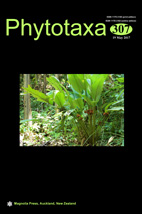Abstract
The genus Fritillaria Linnaeus (1753: 303) (Liliaceae) is the largest within Liliaceae tribe Lilieae Lam. & DC. (Peruzzi et al. 2009a, Carta & Peruzzi 2016). The latter tribe is composed by bulbous, herbaceous plants, with a bulb composed by 2–3 to many scales, anthers dorsifixed, fruit a loculicide capsule with seeds usually winged (Peruzzi 2016). Fritillaria includes about 140 species of perennial bulbous geophytes distributed in the Northern Hemisphere, from North America to Mediterranean region and temperate Asia (Bartolucci et al. 2009), and is subdivided in eight subgenera and a number of sections and series. Fritillaria messanensis Raf. in Desveaux (1814: 272) belongs to F. subg. Fritillaria sect. Fritillaria. According to Kamari & Phitos (2006), Peruzzi et al. (2009b) and Kranjčev & Šešok (2016), F. messanensis consists of four subspecies: F. messanensis subsp. messanensis, occurring in Greece (Mt. Olimbos and Peloponnese) and S Italy (Calabria and Sicily); F. messanensis subsp. gracilis (Ebel 1842: 8) Rix (1978: 356), occurring in the Ionian Islands, Albania, S Croatia, Serbia and Montenegro (see also Tomović et al. 2007); F. messanensis subsp. neglecta (Parlatore 1857: 415) Nyman (1882: 721), endemic to Croatia, and F. messanensis subsp. sphaciotica (Gandoger 1916: 156.) Kamari & Phitos (2006: 225), endemic to Crete.

